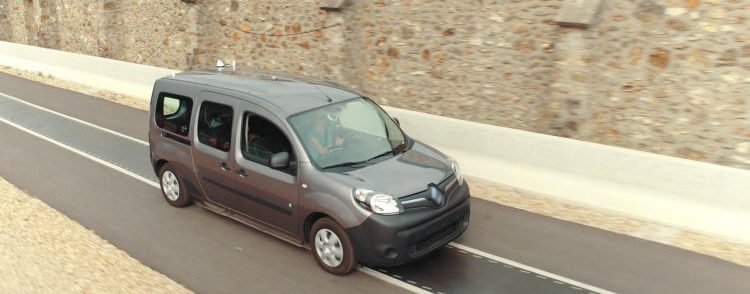Renault, Qualcomm Testing Wireless Charger At Up To 100 km/h

If there's one technology that would instantly remove the phrase "range anxiety" from our vocabulary, it's dynamic charging. That's the fancy way to say an electric car that is able to charge its battery while moving. Lots of test projects have been instituted around the world, and today Renault and Qualcomm announced an update to Qualcomm's previously stationary-only Halo wireless charging technologies that can charge an EV on the road. Specifically, Qualcomm's dynamic electric vehicle charging (DEVC) tech can send 20 kilowatts into an EV even at highway speeds.
Qualcomm installed the receivers into two Renault Kangoo electric vehicles. The 100-meter FABRIC test track was built by Vedecom at Satory, Versailles, near Paris, France as part of a nine-million euro project partly funded by the European Commission. Qualcomm says that these are the components used in the FABRIC DEVC system:
The 100-meter track, comprised of 4 x 25 meter stubs, each running from its own power supply.Each stub powers 14 Base Array Network (BAN) blocks coupled magnetically into the backbone cable.
The power is transmitted across the air gap to two 10 kW vehicle pads (VPs) located under the EV. The vehicle system converts the 85-kHz AC and delivers DC power as requested to the EV's battery management system.
Qualcomm Halo, the non-moving kind, has been tested for three years at the FIA Formula E race series. Halo has also been available as aftermarket upgrades to some plug-in vehicles, but it's only part of the puzzle. Qualcomm says that wireless – and especially dynamic wireless – charging is important for self-driving vehicles. After all, the company says, "you cannot call a car 'autonomous' if it cannot fuel/recharge itself."
Related News
